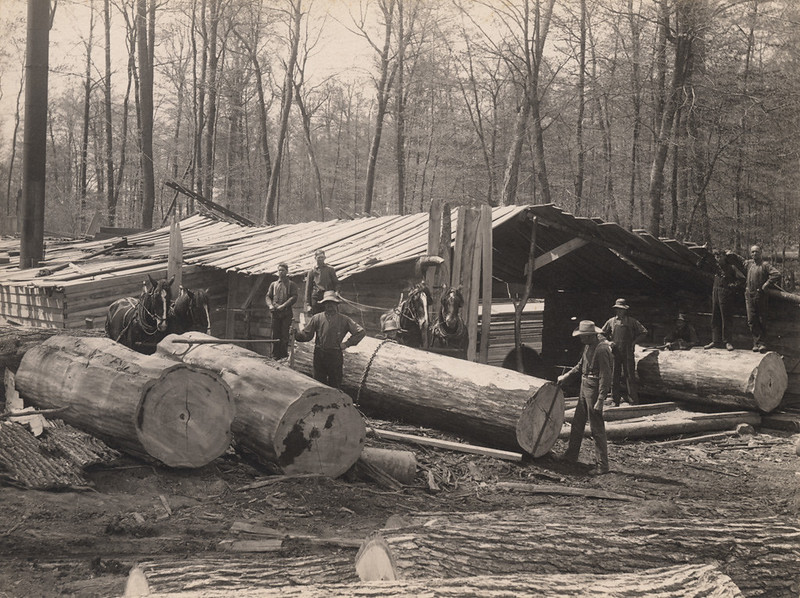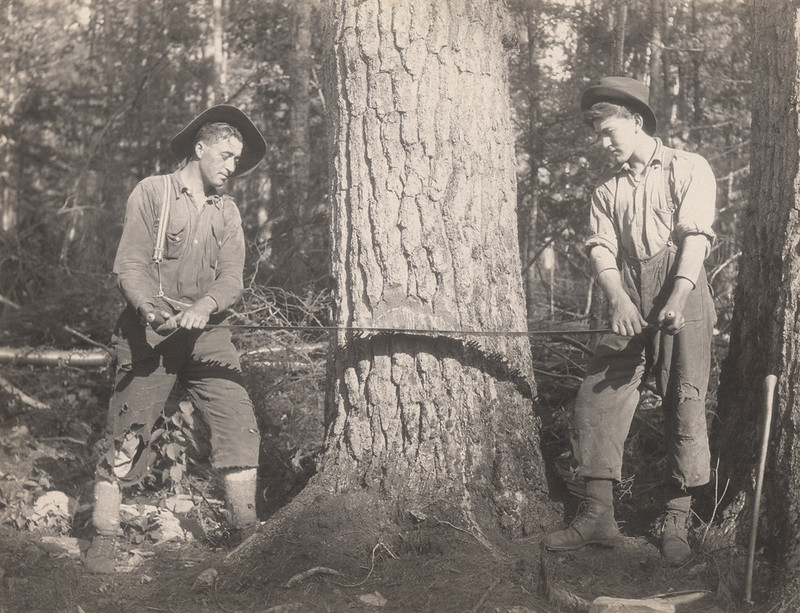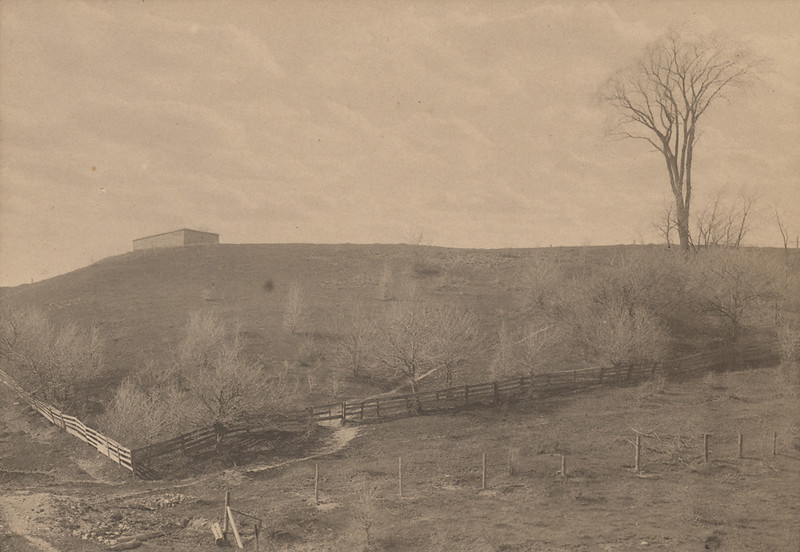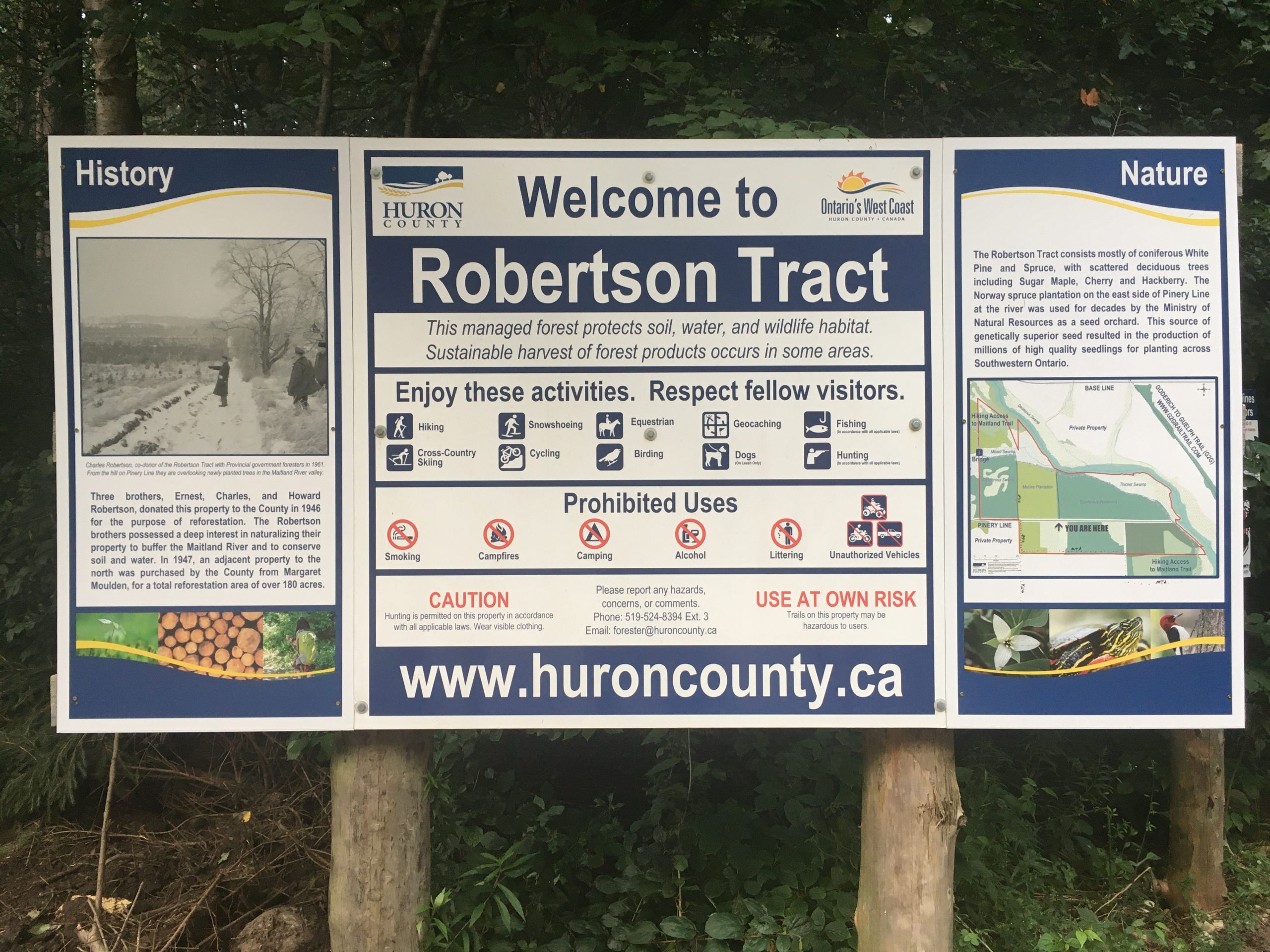Written by Exhibit & Programs Assistant Karsten
When hiking through or even driving past any of Huron County’s forests, you could easily believe that these forests have remained relatively unchanged for time immemorial. However, Huron County’s forests have had a long and, at times, tumultuous history.
Most of southwestern Ontario’s native tree species were in place by around 9000 BP, and until fairly recently, there was minimal disturbance of the local environment. The Anishinaabe inhabitants of what is now Huron County lived a primarily hunter-gatherer lifestyle, taking from the land only what was needed. This was supplemented with small garden plots in the summer. They also made extensive use of canoes, which of course did not require the forest clearing that roads do. Hunting, gathering, and navigating via the waterways are examples of a way of living which developed over centuries to work with the land, not against it. This is in stark contrast to how the land was used after European arrival.
European settlers began to arrive in the early 1800s. At that time the forests displayed a great diversity of species including oak, pine, cedar, sugar maple, yellow birch, swamp elm, beech-tree, white ash, black elm, red elm, viscous elm, walnut, butternut, “hollow-tree”, and cherry tree. In addition to having a great diversity of species, many of the trees are described as measuring 50 to 60 feet from the base to the lowest branches. The settlers quickly set about clearing the land to harvest timber and make farms, taking advantage of the “rights and responsibilities granted them as private landowners”. By the end of the 19th century, in an effort to build profitable farms and better lives for themselves and their families, European immigrants had cut down the vast majority of old growth forests throughout southern Ontario. Approximately 15 percent of Huron County is now forested, and much of that is the result of later conservation efforts.
By the late 19th century, the removal of forest cover, particularly around watersheds, was beginning to have harmful effects on agriculture in southern Ontario. In the summer, droughts would often last two to three weeks; in the winter, roads would have to be redirected over fields as they became impassible due to unimpeded blowing snow and drifting, which could bring about serious loss for the farmer. Realizing the necessity of forests, a few groups such as the Fruit Grower’s Association of Ontario (FGAO) began encouraging farmers to plant trees on their property, as well as lobbying for greater restrictions on cutting trees. In the case of the FGAO, attention was often placed on planting “natural fences” on the edges of farms. With an increasing popularity of scientific agriculture and growing influence of the Ontario Agriculture College, the following century would prove to show increased conservation efforts as understandings of ecosystems became more common. Moving into the first half of the 20th century, more groups formed and began working to increase the amount of forest cover in Ontario. Two of the most important were the Ontario Conservation and Reforestation Association (OCRA) and the Ontario Crop Improvement Association (OCIA), both forming in 1937 after a devastatingly warm summer.
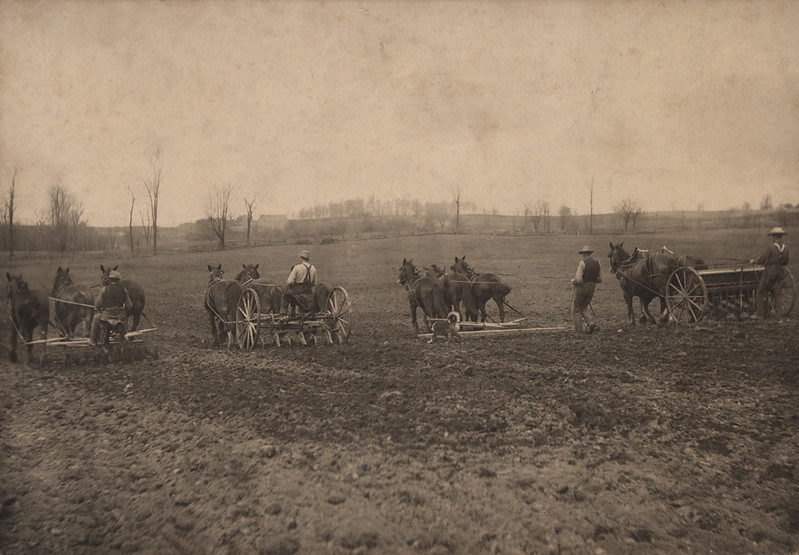
RR Sallows photo of four farmers with teams of horses and implements working in field of peas from 1908. 0335-rrs-ogohc-ph
In Huron County, a testament to 20th century reforestation efforts is the 13 county forest tracts which total over 1,500 acres. Many of these tracts were donated by private landowners who were aware of the importance of the forests. These tracts provide environmental protection, as well as recreation for local residents. Another lasting result of these efforts is the tree bylaw, which was passed in 1947 with the support of farmers and landowners. This bylaw regulates the harvesting of trees in all woodlots which measure over half an acre in size.
Vast amounts of Huron County’s forests were lost in the process of colonization and farm-making. Thanks to historic and on-going conservation efforts though, approximately 15 percent of Huron County is currently forested. With that in mind, be sure not to take what you find for granted next time you visit one of Huron County’s forests.
Sources
Kuhlberg, Mark, ed. “Challenges, Conflicts and Cooperation: The Ministry of Natural Resources and Forestry’s Complicated History with Ontario’s First Nations.” Forest History Society of Ontario. Ministry of Natural Resources and Forestry, 2017. http://www.ontarioforesthistory.ca/files/mnrf_history_relations_with_first_nations.pdf.
Plain, David D. A Brief History of the Saugeen Peninsula. Trafford Publishing, 2018.
Suffling, Roger, Michael Evans, and Ajith Perera. “Presettlement Forest in Southern Ontario: Ecosystems Measured through a Cultural Prism.” The Forestry Chronicle 79, no. 3 (May 2003): 486–87. https://doi.org/https://pubs.cif-ifc.org/doi/pdf/10.5558/tfc79485-3
Bowley, Patricia “Farm Forestry in Agricultural Southern Ontario, ca. 1850-1940: Evolving Strategies in the Management and Conservation of Forests, Soils and Water on Private Lands.” Scientia Canadensis 38, no. 1 (2015): 22–49. https://doi.org/10.7202/1036041ar
Pullen, David. “Forests For Our Future” Management Plan for the County Forests, Recommendations for Tree Cover Enhancement. Huron County, 2014. https://www.huroncounty.ca/wp-content/uploads/2016/05/Forest_For_Our_Future_2014-2033.pdf
Huron Stewardship Council, https://www.huronstewardship.ca/nature/forests/
Forestry Services, https://www.huroncounty.ca/plandev/forestry-services/

